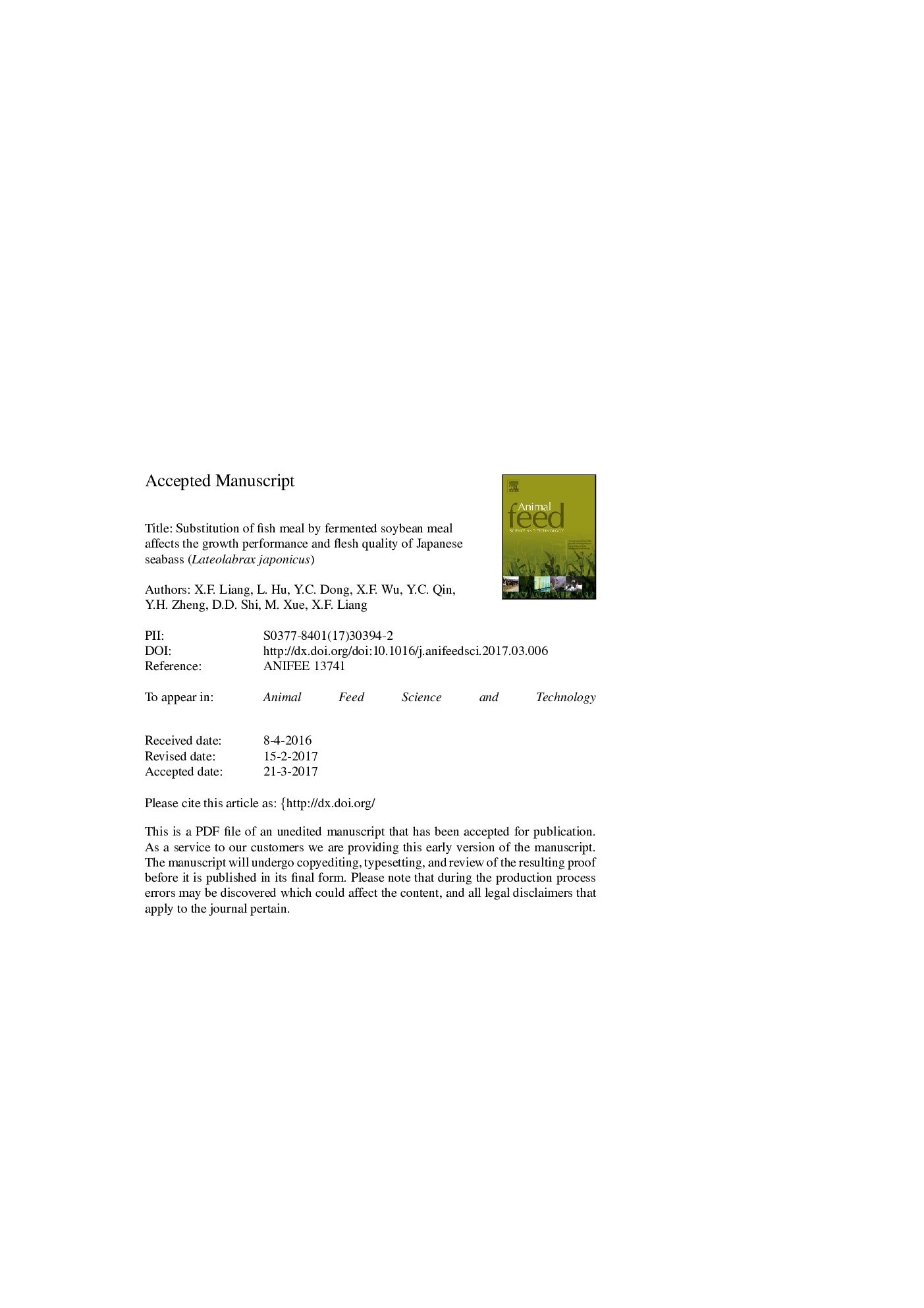| کد مقاله | کد نشریه | سال انتشار | مقاله انگلیسی | نسخه تمام متن |
|---|---|---|---|---|
| 5538853 | 1552357 | 2017 | 47 صفحه PDF | دانلود رایگان |
عنوان انگلیسی مقاله ISI
Substitution of fish meal by fermented soybean meal affects the growth performance and flesh quality of Japanese seabass (Lateolabrax japonicus)
دانلود مقاله + سفارش ترجمه
دانلود مقاله ISI انگلیسی
رایگان برای ایرانیان
کلمات کلیدی
موضوعات مرتبط
علوم زیستی و بیوفناوری
علوم کشاورزی و بیولوژیک
علوم دامی و جانورشناسی
پیش نمایش صفحه اول مقاله

چکیده انگلیسی
A 16-week growth trial was conducted to study the effects of replacing dietary super prime fish meal (FM) with fermented soybean meal (FSM) in Japanese seabass (Lateolabrax japonicus). The outcome of the trial was assessed using the digestible optimum amino acid (DIAA) profile of growth performance and flesh quality of the fish (initial body weight = 13.3 g ± 0.1 g). Four diets that were isoenergetic and isonitrogenous were formulated. A commercial formula containing 36% FM was assigned as the control diet (named here FM). In the other 3 diets, 25%, 50% or 75% of the FM was replaced with FSM, in which lysine (Lys), methionine (Met), and threonine (Thr) were balanced as in the control diet using crystallized amino acids (these diets were named FSM25, FSM50 and FSM75, respectively). Fish were sampled at 8 and 16 weeks. Flesh quality clustering analysis was conducted by Near Infrared (NIR) Spectrometry. The analyses showed that the feeding rate, specific growth rate, feed conversion ratio, protein productive value, energy productive value, and body composition did not differ between the FM and FSM25 groups (P > 0.05); however, both groups performed significantly better than the other groups (P < 0.05). Fish fed the FSM75 diet showed a very low growth performance and a high mortality rate in the first 8 weeks, and this treatment was therefore discontinued. Japanese seabass adapted to the FSM50 diet (180 g kgâ1 FM) after 8 weeks of feeding, and compensatory feeding and growth occurred to give this group a higher growth rate; however, the flesh quality was poorer than those of the FM and FSM25 groups. There is a great potential to apply NIR spectrum to classify the flesh quality of fish fed with different protein sources.
ناشر
Database: Elsevier - ScienceDirect (ساینس دایرکت)
Journal: Animal Feed Science and Technology - Volume 229, July 2017, Pages 1-12
Journal: Animal Feed Science and Technology - Volume 229, July 2017, Pages 1-12
نویسندگان
X.F. Liang, L. Hu, Y.C. Dong, X.F. Wu, Y.C. Qin, Y.H. Zheng, D.D. Shi, M. Xue, X.F. Liang,